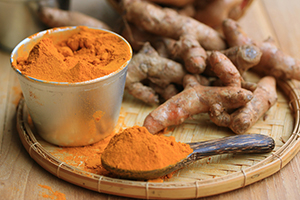Face Winter-Related Joint Pain Head On!
 Joint pain is an incredibly common health challenge, faced by an estimated 1 in 5 Canadians.[1] It is typically due to arthritis, in which joints are damaged due to time-related “wear and tear”—osteoarthritis—or inflammatory attack—autoimmune arthritis.[2][3]
Joint pain is an incredibly common health challenge, faced by an estimated 1 in 5 Canadians.[1] It is typically due to arthritis, in which joints are damaged due to time-related “wear and tear”—osteoarthritis—or inflammatory attack—autoimmune arthritis.[2][3]
Many folks, whether they have an arthritis diagnosis or not, notice worsening joint pain especially with cold weather.[4][5] There is no one clear reason for this, but speculation exists that decreased atmospheric pressure—associated with temperature drops—causes expansion of tissues, increasing pressure and pain in joints.[6] Or perhaps cold weather causes muscles to tense up and reduce overall mobility, thus increasing the perception of pain.[7] Here are some ideas that may help reduce joint pain frequency and severity both in the short and long term.
Diet
There are some general dietary recommendations that may help reduce long-term joint pain frequency and severity. The most widely studied dietary pattern showing benefit in inflammatory conditions is the Mediterranean diet.[8][9] This diet emphasizes a whole food, plant-based approach, high in fish and seafood, fruits, vegetables, nuts, legumes, and whole grains; while being low in red meat, high-fat diary, processed foods, or foods high in refined sugar.[10]
A key feature of the Mediterranean diet is that it is low in pro-inflammatory trans-fats and saturated fats typically found in processed foods, high-fat dairy products, and red meat, while being high in good anti-inflammatory fat sources such as olive oil—high in monounsaturated fat—and fish, seafood, nuts, and seeds—high in omega-3 fatty acids.[11][12][13] These monounsaturated fats and omega-3 fatty acids both appear to exert an anti-inflammatory effect upon the body, in part by reducing the production of inflammatory chemical messengers (cytokines) produced in response to injury and inflammation.[14][15][16]
People sometimes find that there are specific foods that worsen their joint pain more than others—dairy products; gluten-containing foods such as wheat, oats, barley, and rye; as well as nightshade fruits and vegetables like tomatoes, potatoes, peppers, and eggplant.[17][18][19] Avoiding animal products entirely via a vegan or vegetarian diet may be helpful for some individuals.[20][21] However, it should be noted that everyone experiences the same response to these foods!
Supplements
There are several nutraceutical products that have been studied and found reasonably effective in providing pain relief and reducing inflammation due to arthritis. They can be divided into two groups by main effect: supplements that provide pain relief and reduce inflammation, and those improving joint health and reducing joint damage.
 You may have heard about turmeric—or curcumin—a popular supplement often suggested for joint pain.[22] It is thought to exert both analgesic (pain-reliving) and anti-inflammatory effects by inhibiting the production of inflammatory messengers and modulating the immune system.[23] Curcumin appears to work similar to NSAID drugs, and some studies have shown it to be comparable in effect to ibuprofen in relieving joint pain.[24][25] Other herbs and spices with similar influences include boswellia, Devil’s claw, ginger, and white willow bark.[26][27][28][29] While each herb or spice acts differently, pain relief can occur within hours—especially in the case of ginger and white willow bark—while inflammation relief may take days to weeks for curcumin and ginger.[30][31][32]
You may have heard about turmeric—or curcumin—a popular supplement often suggested for joint pain.[22] It is thought to exert both analgesic (pain-reliving) and anti-inflammatory effects by inhibiting the production of inflammatory messengers and modulating the immune system.[23] Curcumin appears to work similar to NSAID drugs, and some studies have shown it to be comparable in effect to ibuprofen in relieving joint pain.[24][25] Other herbs and spices with similar influences include boswellia, Devil’s claw, ginger, and white willow bark.[26][27][28][29] While each herb or spice acts differently, pain relief can occur within hours—especially in the case of ginger and white willow bark—while inflammation relief may take days to weeks for curcumin and ginger.[30][31][32]
Comparatively, supplements that appear to improve joint health and reduce damage and destruction include glucosamine sulfate, chondroitin, MSM, and collagen.[33][34][35][36] These supplements may also have anti-inflammatory and pain-relieving effects similar to turmeric and ginger, as described above.[37][38][39][40] But they need to be taken on a regular basis for an extended period of time before symptoms start to improve—typically four weeks or longer, sometimes from eight weeks to two months.[41][42][43][44]
Probiotics
Research also suggests probiotics may be helpful in improving arthritis symptoms, especially rheumatoid arthritis.[45][46] Rheumatoid arthritis is a type of autoimmune arthritis and is often associated with gastrointestinal (GI) inflammation, changes in intestinal flora, and gut dysbiosis.[47][48] As probiotics are well documented to locally improve gut health and decrease GI inflammation, it is thought that probiotics decrease gut inflammation and modulate the immune system, thus resulting in lowered levels of systemic inflammation and, subsequently, less joint pain.[49][50] So, including probiotics—through food or supplements—may help reduce joint pain severity and improve long-term outcomes.[51][52]
Acupuncture
Acupuncture is a well-researched therapy that may help with joint pain relief, both in short and long term.[53][54] A practitioner of acupuncture will insert fine needles at select points on the body and physically stimulate them, either manually or through the application of heat or electricity. This is thought to stimulate the nervous system and alter pain perception at multiple levels in the body, often providing short-term pain relief and long-term reduction in inflammation and pain.[55][56]
Lifestyle
Some lifestyle changes may help reduce joint pain in cold weather. Dress warmly or in layers, so affected joints don’t get too chilled.[57][58] For symptomatic relief, the application of heat for a maximum of 20 minutes, with about 20 minutes break between applications, may help.[59][60] For long-term benefit, remaining active with gentle physical activity will help keep joints as healthy as possible.[61][62] Choose whatever fits your lifestyle and doesn’t worsen pain: walking, swimming, stretching, yoga, or tai chi.[63] Ensuring a good night’s sleep can also help, as pain often worsens with fatigue and poor sleep.[64][65]
Conclusion
Winter is often a time when people experience joint pain flares, but there are a number of diet, supplement, lifestyle, and therapeutic options that may help manage pain in both the short and long term. Be sure to consult with a qualified health-care provider for the most appropriate recommendations for you, and absolutely speak with your doctor if you experience worsening or persistent joint pain, or have difficulty using a joint.
 Dr. Katie DeGroot, BSc, ND, MScN
Dr. Katie DeGroot, BSc, ND, MScN
Dr. DeGroot is an Alberta-registered naturopathic doctor who also holds a Master of Science in Nutrition. She offers nutritionally focused care and has a special interest in digestive issues and supportive mental health-care.
drkatiedegroot.ca
References
-
Arthritis Society. The Truth About Arthritis. · https://arthritis.ca/about-arthritis/what-is-arthritis/the-truth-about-arthritis · Accessed 2021-08-27.
-
Arthritis Society. The Truth About Arthritis.
-
Mayo Clinic Staff. Osteoarthritis—Symptoms & causes. · https://www.mayoclinic.org/diseases-conditions/osteoarthritis/symptoms-causes/syc-20351925 · Accessed 2021-08-27.
-
Chakour, K. “It’s cold outside! Do your joints hurt?” UChicago Medicine—Forefront | Prevention and Screening, 2021-01-26. · https://www.uchicagomedicine.org/forefront/prevention-and-screening-articles/its-cold-outside-do-your-joints-hurt · Accessed 2021-08-28.
-
Orthopaedic Hospital of Wisconsin. “8 tips for winter joint pain relief.” Orthopaedic Hospital of Wisconsin Blog. · https://www.ohow.com/2019/12/19/8-tips-for-winter-joint-pain-relief/ · Accessed 2021-08-28.
-
Chakour, K. “It’s cold outside! Do your joints hurt?”
-
Orthopaedic Hospital of Wisconsin. “8 tips for winter joint pain relief.”
-
Alwarith, J., H. Kahleova, E. Rembert, W. Yonas, S. Dort, M. Calcagno, N. Burgess, L. Crosby, and N.D. Barnard. “Nutrition interventions in rheumatoid arthritis: The potential use of plant-based diets. A Review.” Frontiers in Nutrition, Vol. 6 (2019): 141.
-
Sköldstam, L., L. Hagfors, and G. Johansson. “An experimental study of a Mediterranean diet intervention for patients with rheumatoid arthritis.” Annals of the Rheumatic Diseases, Vol. 62, No. 3 (2003): 208–214.
-
Alwarith et al. “Nutrition interventions in rheumatoid arthritis.”
-
Calder, P.C. “Omega-3 fatty acids and inflammatory processes.” Nutrients, Vol. 2, No. 3 (2010): 355–374.
-
Fernandes, J., M. Fialho, R. Santos, C. Peixoto-Plácido, T. Madeira, N. Sousa-Santos, A. Virgolino, O. Santos, and A.V. Carneiro. “Is olive oil good for you? A systematic review and meta-analysis on anti-inflammatory benefits from regular dietary intake.” Nutrition, Vol. 69 (2020): 110559.
-
Tedeschi, S.K., and K.H. Costenbader. “Is there a role for diet in the therapy of rheumatoid arthritis?” Current Rheumatology Reports, Vol. 18, No. 5 (2016): 1–9.
-
Calder. “Omega-3 fatty acids and inflammatory processes.”
-
Fernandes et al. “Is olive oil good for you?”
-
NRC Natural Medicines. Olive. · https://naturalmedicines.therapeuticresearch.com/databases/food,-herbs-supplements/professional.aspx?productid=233

 Stores
Stores